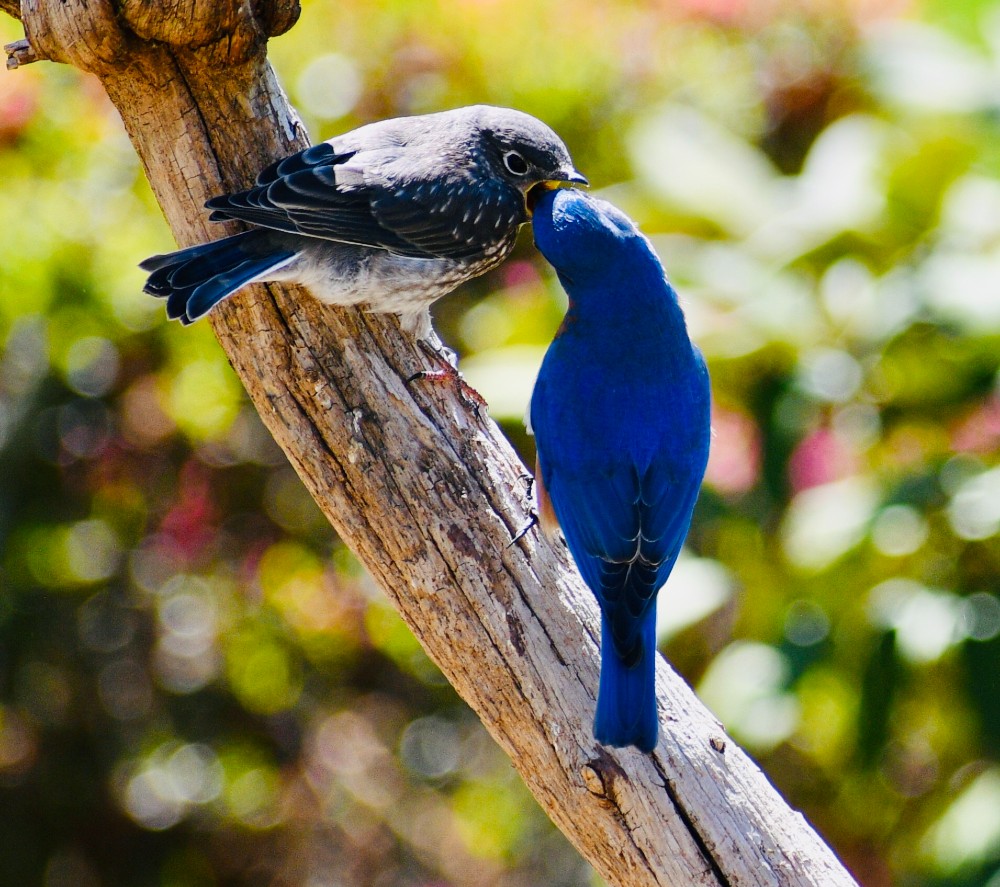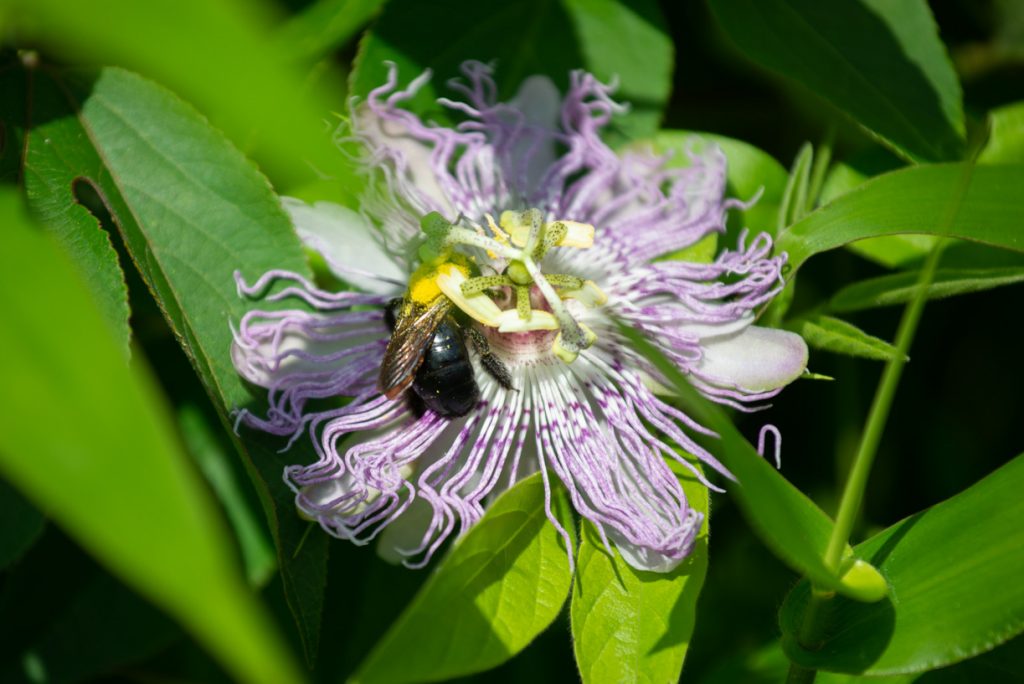Complete Guide to Gardening for Butterflies
How to Grow a Butterfly Garden in Western North Carolina and Upstate South Carolina
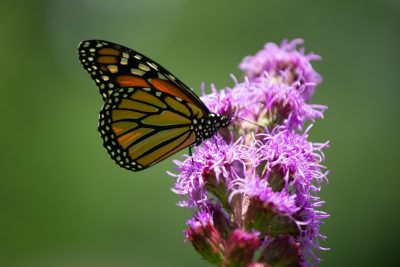
Butterflies are an integral part of our ecosystem—and a beautiful part of your garden. Their role as pollinators means that many plants could not reproduce without their help. Butterflies are also an essential part of the food chain. Many birds, bats, and other animals rely on these insects as a necessary food source.
Without butterflies, our gardens would be much less colorful and our ecosystems would be in danger. But there are simple ways you can help our winged friends, from planting native flowers to creating pupating sites and more.
In this guide, you will find:
- The most important thing not to do!
- An introduction to butterfly life cycles
- Top host plants for caterpillars
- Top nectar plants for adult butterflies
- Best native trees to grow for butterflies and moths
- More tips to create habitat for butterflies and moths

Photo by Bruce Hallman/USFWS.
The Most Important Thing *Not* To Do
The most important thing not to do in your butterfly garden is to use pesticides. Pesticides can be fatal for caterpillars, even natural or organic ones. It’s best to avoid them altogether for the sake of caterpillars in your garden. Here are tips for growing a garden without pesticides.
Butterfly Life Cycles: Egg, Caterpillar, Chrysalis, Adult
Butterflies have four life stages: the egg, the caterpillar or larva, the chrysalis or pupa, and the adult butterfly. The first three are when the butterfly is developing and the most vulnerable.
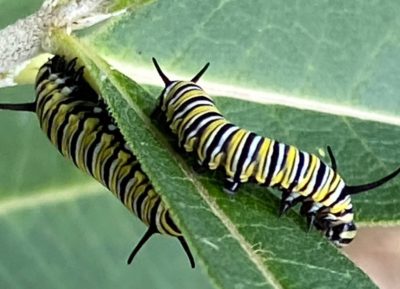
In the beginning, the adult butterfly lays its eggs on a plant known as the butterfly’s host plant. Butterflies tend to have very specific host plants, such as monarchs with milkweed. A monarch will only lay its eggs on milkweed because this is the only plant its larva can consume. This is the case with many butterfly species, making host plants a top priority in your butterfly garden.
The egg then hatches and a caterpillar surfaces. The caterpillar feeds on the host plant as it grows and matures and it eventually begins to form its chrysalis, or pupa. The caterpillar then emerges from its chrysalis as an adult butterfly and begins to feed on nectar-rich flowers. As adults, butterflies are much less specific and can feed on a variety of flowers.
Top Host Plants for Caterpillars
Adult, winged butterflies can gather nectar from many kinds of plants. Their caterpillars, on the contrary, typically need highly specific plants. Often, a butterfly species has adapted to tolerate the toxins that one specific plant uses for defense. In some cases, the caterpillar actually uses this toxin as its own defense, making it poisonous to predators. It’s a highly specialized strategy and the butterflies will only lay eggs on their specific host plants.
Without caterpillars, you won’t get butterflies. Also, caterpillars are a vital source of food for birds, especially as food for their nestlings. A single pair of breeding chickadees, for example, must find 6,000 to 9,000 caterpillars to rear one clutch of young (source: NestWatch.org). So planting these plants will result in more butterflies and more birds.
Milkweed: Host Plant for Monarchs
Scientific name: Asclepias spp.
Type: Wildflower
Height: 2 to 6 feet, depending on species
 Perhaps one of the most famous butterfly plants, these flowers have earned their way to garden fame. They serve as the sole host plant for monarch caterpillars, a species of butterfly whose population has declined by over 80% in the past few decades. Planting milkweed provides the sole source of food for monarch caterpillars.
Perhaps one of the most famous butterfly plants, these flowers have earned their way to garden fame. They serve as the sole host plant for monarch caterpillars, a species of butterfly whose population has declined by over 80% in the past few decades. Planting milkweed provides the sole source of food for monarch caterpillars.

Common milkweed (Asclepias syriaca) is one of the easiest and quickest species to grow if you also have plenty of space for it to spread, but other species including butterfly weed (A. tuberosa), poke milkweed (A. exaltata), purple milkweed (A. purpurascens), swamp milkweed (A. incarnata and A. incarnata ssp. puchra), and whorled milkweed (A. verticillata.) These are all beneficial to plant for monarchs and are also less prolific in their growth habits.
However, in the Carolinas, it’s very important that you avoid planting tropical milkweeds such as Mexican Milkweed (A. curassavica) and balloon milkweed (Gomphorcarpus physocarpus, formerly named A. physocarpa). In areas where they don’t die back, these non-natives can harbor pathogens that harm monarchs. Tropical milkweeds may also disrupt migration for some monarchs in the fall.
Growing tips: Milkweed growing conditions vary depending on species. It should be planted with two to three feet of space relative to any other plants you have growing. This flower typically blooms from June to August.
Golden Alexander: Host Plant for Black Swallowtails
Scientific name: Zizia aurea
Type: Wildflower
Height: 1 to 2 feet
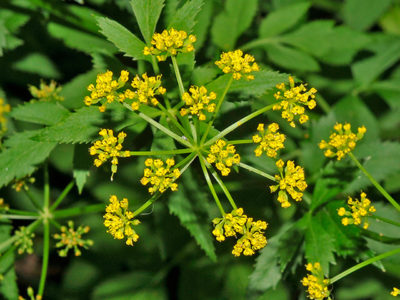

This is a native host plant for black swallowtail butterflies. The caterpillars of these butterflies feed on its leaves and adults feed on the nectar.
Growing tips: Golden Alexanders are easy to grow and persist through a wide variety of sun and soil situations. Although they can tolerate lots of shade, this plant prefers growing in full or partial sun. Try to leave one to two feet of space between these and other plants in your garden. This flower blooms from April to June, giving your garden some early color in spring months.
Violet: Host Plant for Fritillaries
Scientific name: Viola spp.
Type: Wildfower
Height: 6 to 12 inches
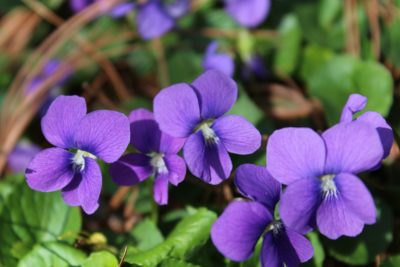
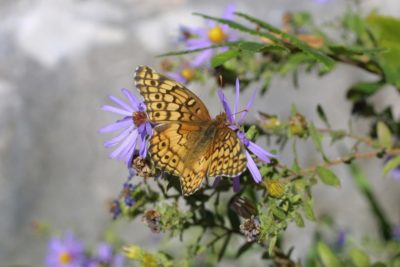
The leaves of these common flowers are a host for the great spangled fritillary and variegated fritillary, along with many other fritillaries. Although some consider it a weed, they make a beautiful ground cover and are a ready nectar source for pollinators in the spring.
Growing tips: These flowers are very adaptable and can grow in conditions ranging from full sunlight to full shade. They prefer about 6 to 8 inches of space to grow. These early bloomers pop up from April to June, making them an early nectar source for bees and butterflies.
Spicebush: Host Plant for Spicebush Swallowtails
Scientific name: Lindera benzoin
Type: Shrub
Height: 6 to 12 feet
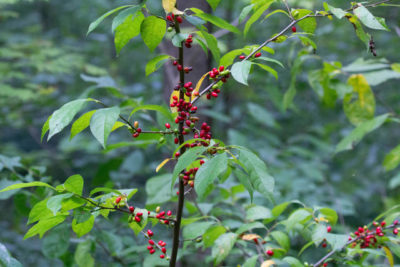
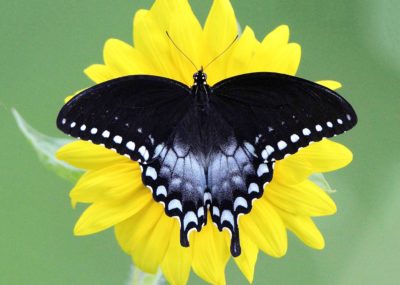
The caterpillars of spicebush swallowtail butterflies love the leaves of this plant, and the red berries produced on the female shrubs provide fuel for migrating birds, too. The nectar is also popular with a variety of butterflies and insects.
Growing tips: This shrub excels in shady, moist soils. Since it’s a bigger plant, it needs six to eight feet of spacing from other plants in your garden. This shrub has earlier blooms with flowers appearing in April and May.
Buttonbush: Host Plant for Sphinx Moths & More
Scientific name: Cephalanthus occidentalis
Type: Shrub
Height: 6 to 12 feet
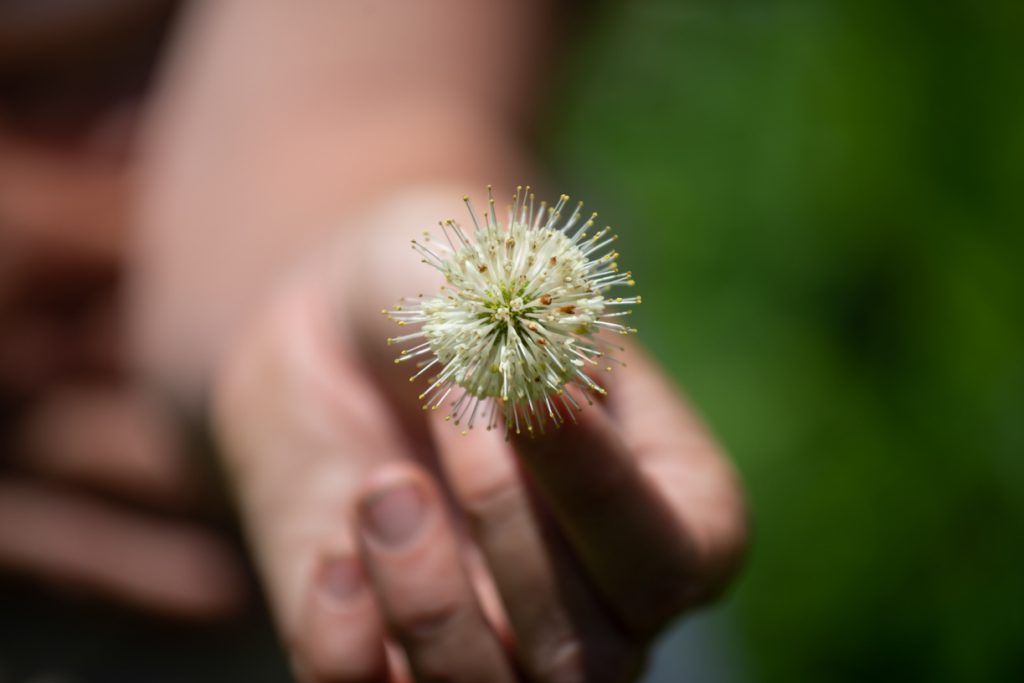
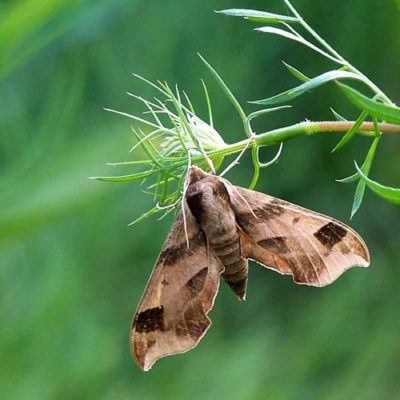
This pretty shrub with unique flowers serves as a host for sphinx moths and 18 other pollinator species. Its flowers also attract many adult butterflies, including skippers, monarchs and more. This species makes an excellent alternative to the invasive butterfly bush.
Growing tips: This shrub prefers full to partial sun and medium to wet soil for ideal growing conditions. Something unique about this plant is that it is very resistant to wet soils, making it perfect for places that flood often or have wetland qualities. Try to leave about eight feet of space between this shrub and other plants in your garden. This shrub will give you summer blooms with flowers appearing from June to August.
Passion Vine: Host Plant for Fritillaries
Scientific name: Passiflora incarnata
Type: Vine
Height: 15 to 30 feet
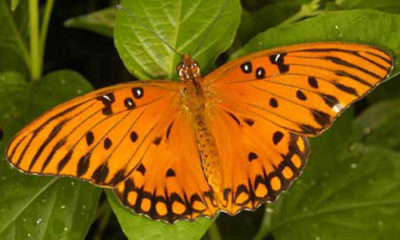
This unique flower is a host plant for multiple species of butterflies including our native variegated fritillaries and gulf fritillaries.
Growing tips: These vines grow quickly and require little maintenance. They prefer full to partial sun exposure and need about 8 to 12 feet of space to grow. These vines boast long-lasting blooms from June to September.
Pipevine: Host Plant for Pipevine Swallowtails
Scientific name: Aristolochia macrophylla
Type: Vine
Height: 20 to 35 feet
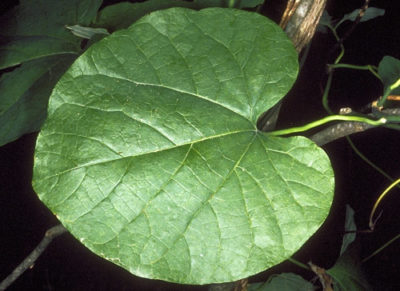
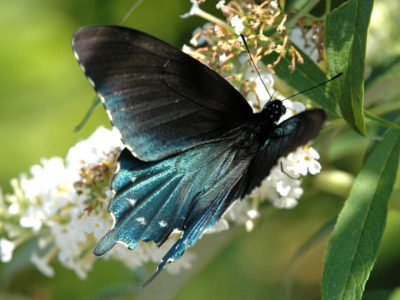
A picturesque vine with heart-shaped leaves, the pipevine or Dutchman’s pipe acts as a host for the caterpillar of pipevine swallowtail butterflies.
Growing tips: This vine is fast-growing and thrives in full or partial sun. Try to plant one to two feet away from other plants to give this vine enough room to grow.
Pipevine is one of the top plants recommended by butterfly expert, Kim Bailey, the owner of Milkweed Meadows Farm in Fruitland, NC. See her inspiring story here.
Serviceberry: Host Plant for Viceroy and Red Admirals
Scientific name: Amelanchier arborea
Type: Tree
Height: 10 to 25 feet
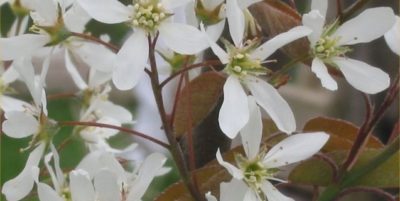

With nice white blooms, this early flowering tree is a nectar source for spring pollinators and a native alternative to Bradford pear. The leaves are a source of food for viceroy and red admiral caterpillars, and the berries attract native birds.
Growing tips: This tree prefers full to partial sunlight and five to ten feet of space to grow. Its flowers bloom in March and April, making it a good early nectar source.
Pawpaw: Host Plant for Zebra Swallowtails
Scientific name: Asimina triloba
Type: Tree
Height: 15 to 20 feet
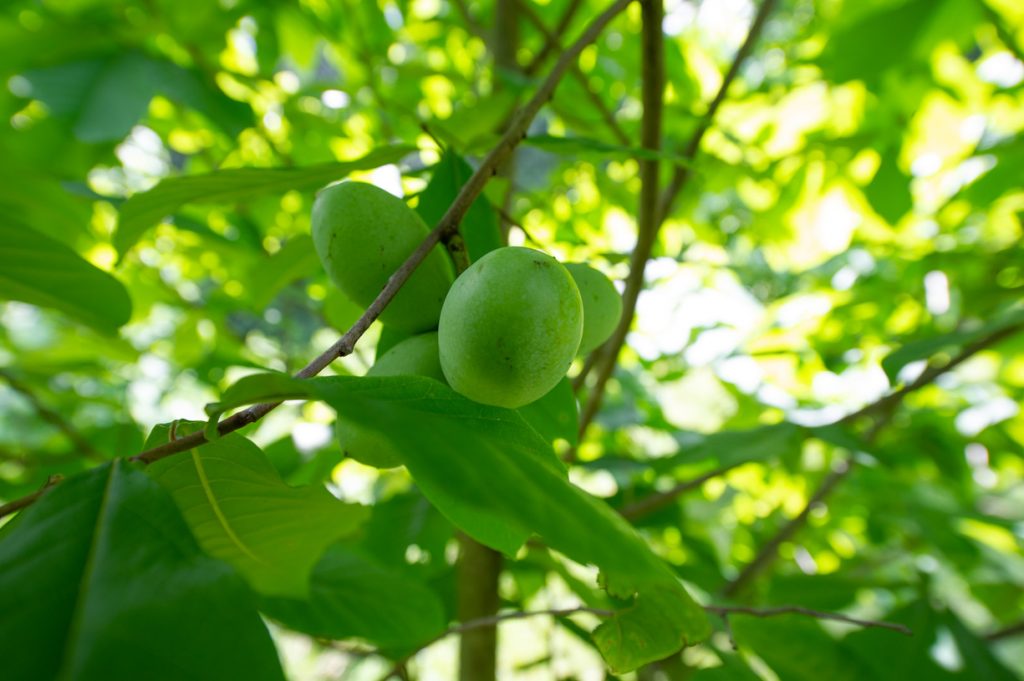
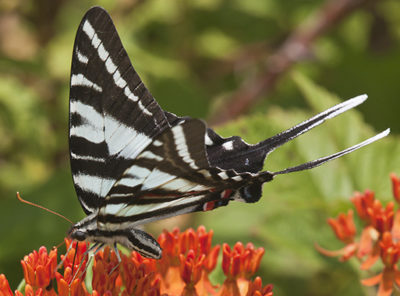
These fruit-producing trees serve as a larval host to zebra swallowtail butterflies.
Growing tips: Pawpaws grow well in full sun and well-draining soil. If you want your tree to produce fruit, though, you’ll need to plant at least two of them so cross-pollination can take place. These trees are early bloomers with flowers appearing in April and May.
Partridge Pea: Host Plant for Sleepy and Orange Sulfurs
Scientific name: Chamaecrista fasciculata
Type: Wildflower
Height: 1 to 3 feet

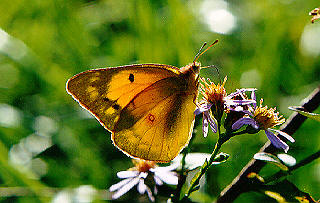
These bright yellow flowers are a favorite for bees and butterflies, and its leaves serve as a host for the caterpillars of sulphur butterflies, including orange sulfur and sleepy orange butterflies.
Growing tips: This plant thrives in full to partial sunlight and needs about six to twelve inches of space to grow. They’re a late bloomer with flowers appearing from July to September. This makes them an ideal combination with early blooming flowers so your pollinator visitors have a consistent source of nectar.
Watch this video for more on butterfly host plants:
More Resources on Native Plant Gardening in WNC and Upstate SC
For a list of more native plants, check out these recommended lists from Bee City USA – Hendersonville and from Bee City USA – Asheville.
For more growing tips and additional information, head to NC State Extension or Prairie Moon Nursery and search for the plant you’re interested in.
Want to know where you can get native plants in Western North Carolina or Upstate South Carolina? Here are some tips on nurseries and plant sales to check out.
Top Nectar Plants for Adult Butterflies
Once our caterpillars become adult butterflies, they need a constant source of nectar. Here are some of the top nectar plants for adult butterflies in Western North Carolina and Upstate South Carolina:
Non-native (but not invasive) annuals:
- Zinnias (Zinnia elegans or Zinnia violacea)
- Cosmos (Cosmos bipinnatus)
Native perennials:
- Milkweed (Asclepias spp.)
- Tickseed (Coreopsis spp.)
- Purple Coneflower (Echinacea purpurea)
- Black-eyed Susan (Rudbeckia hirta and Rudbeckia fulgida)
- Mountain Mint (Pycnanthemum spp.)
- Blazing Star (Liatris spp.)
- Joe Pye Weed (Eutrochium purpureum and Eutrochium fistulosu)
- Ironweed (Vernonia spp.)
- Aster (Symphyotrichum spp.)
- Goldenrod (Solidago spp.)
- Swamp Sunflower (Helianthus angustifolius)
- Blue Mistflower (Conoclinium coelestinum)
Best Native Trees to Grow for Butterflies and Moths
While you may not think about planting an oak tree as part of your garden, trees are able to support a huge variety of butterfly and moth species. Here are the top trees to plant, ranked by the number of Lepidoptera species they support. That’s the order of insects that includes butterflies and moths.
- Oak trees (Quercus) support 534 species
- Willow trees (Salix) support 456 species
- Cherry and Plum trees (Prunus) support 456 species
- Birch trees (Betula) support 413 species
- Poplar and Cottonwood trees (Populus) support 368 species
- Crabapple trees (Malus) support 311 species
- Blueberry and Cranberry trees (Vaccinium) support 288 species
- Maple and Box Elder trees (Acer) support 285 species
- Elm trees (Ulmus) support 213 species
- Pine trees (Pinus) support 203 species
- Hickory trees (Carya) support 200 species
- Hawthorn trees (Crataegus) support 159 species
- Alder trees (Alnus) support 156 species
- Spruce trees (Picea) support 156 species
- Ash trees (Fraxinus) support 150 species
- Basswood and Linden trees (Tilia) support 150 species
- Filbert and Hazelnut trees (Corylus) support 131 species
- Walnut and Butternut trees (Juglans) support 130 species
- Beech trees (Fagus) support 126 species
- Chestnut trees (Castanea) support 125 species
Source: Bringing Nature Home by Doug Tallamy

More Tips for an Abundance of Moths and Butterflies
Create Natural Areas on the Ground for Pupating

Over 90% of caterpillars that develop on plants do not pupate on their host plants. This means that they leave the host plant for their chrysalis stage, as they are turning into butterflies. Often chrysalides (or cocoons in the case of moths) are found on the ground. Because of this, it’s beneficial to create pupating sites underneath their host plants.
Solution: Replace the lawn under your host trees with natural ground cover. Having rocks, logs, and leaf litter underneath trees is ideal. Logs are especially important because many caterpillars prefer to burrow into logs to pupate.
Learn more about the benefits of leaves and mulch under trees.
Have Flowers Blooming from Spring to Fall
Since adult butterflies need a constant nectar source, this means they need flowers with varying bloom times. This provides a constant source of nectar for any pollinators visiting your garden.
Solution: If you plant early blooming flowers such as golden Alexanders, spicebush, serviceberry, and violets, you should also try to plant late blooming flowers to accompany these, such as milkweed, buttonbush, passion vine, and partridge pea.
Turn Out Lights at Night to Protect Moths
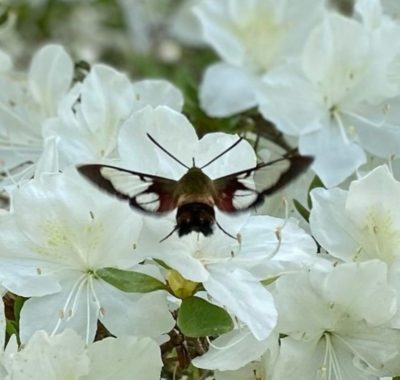
Don’t forget moths! Moths are pollinators too, and there are a few considerations to keep in mind for them as well. One of the biggest ones is not keeping your lights on at night. Lights attract moths and they will wear themselves out flying around the lights, sacrificing energy they need to survive.
Solution: Turn lights off at night, or consider installing motion-sensor lights if necessary.
Enjoy Your Beautiful Butterfly Garden!
Restoring nature where we live is one of the most hopeful, hands-on ways we can care for our world. Find more Habitat at Home tips here. And, be on the lookout for cool living things each spring during our annual Habitat at Home photo contest.
This guide was produced by AmeriCorps members Pat Barcas and Allie Houtz. The video was created by intern Alexla Perez-Sanchez. Key sources of information include Bringing Nature Home and Nature’s Best Hope by Doug Tallamy, growing tips from Prairie Moon Nursery, and expert advice from local farmer and environmental educator Kim Bailey who runs Milkweed Meadows Farm in Fruitland, NC. It was edited by communications director Rose Jenkins Lane.
